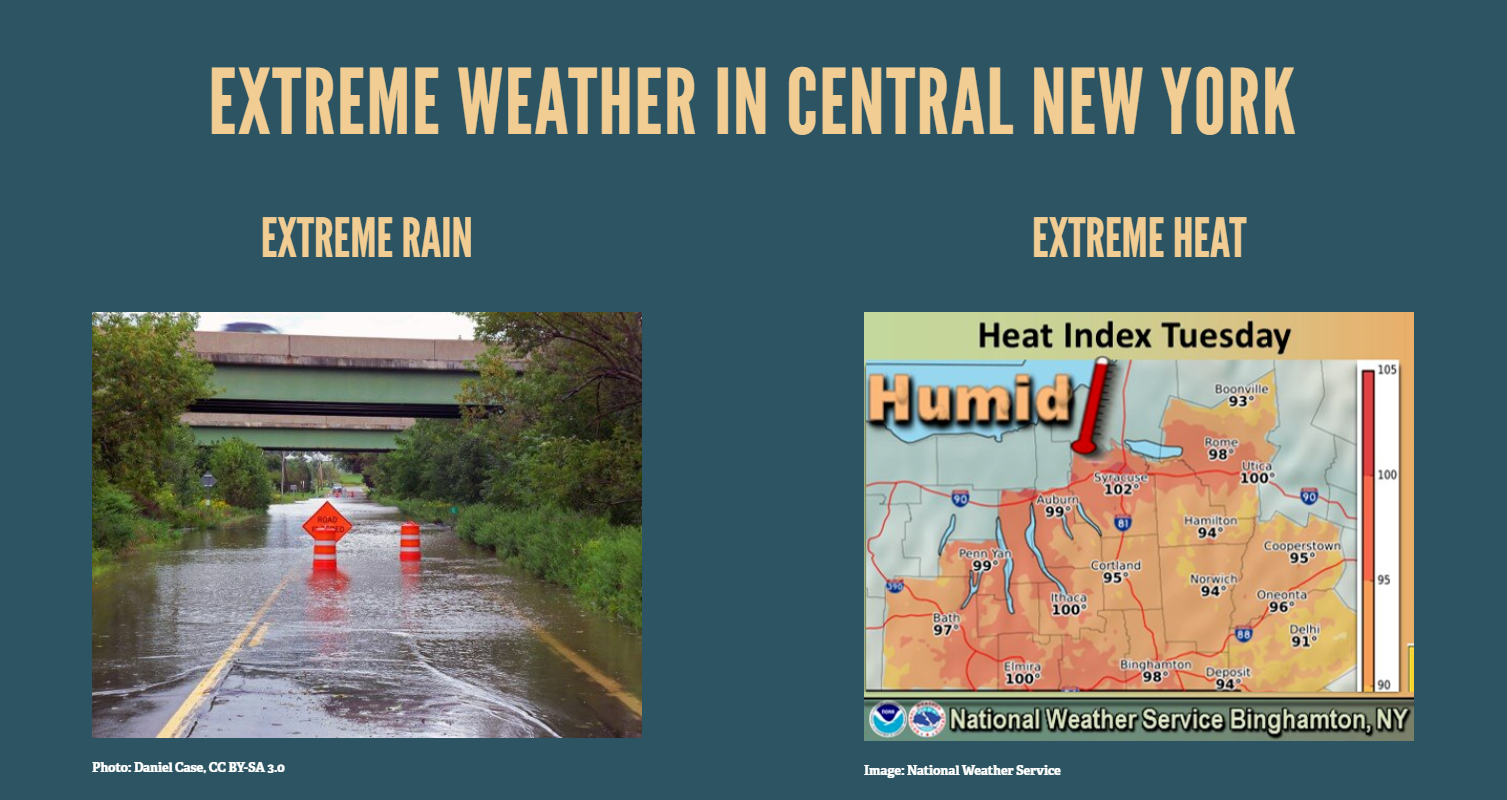Climate change affects all of us.
Here are a few examples.
Sea Level Rise
Sea levels are rising due to expansion of a warming ocean and input of water from melting glaciers and ice sheets. This puts over 600 million coastal residents at risk. Rising seas are causing more frequent flooding, and coastal storms do more damage with a higher sea level. People in some communities will need to relocate, one example of how climate change can drive human migration.
Photo: People affected by coastal flooding in Jakarta, Indonesia (World Meteorological Organization, CC BY-NC-ND 2.0)
Some ways to adapt:
Extreme Weather
By the late 2060s, New York State can expect 14 to 26 more days per year with temperature above 90°F than in the early 2000s. Summers in some parts of the world will become unlivable. Rainfall is becoming more extreme, too. Many places, including Central New York, are experiencing more heavy rainfalls and flooding.
Photo: A construction worker trying to stay cool during a heat wave.
Some ways to adapt:
Drought
Warmer temperatures dry out the soil, affecting our ability to grow crops and supply food. Drought conditions can lead to more frequent and intense wildfires.
Photo: A farmer in a dry field in Thailand.
Some ways to adapt:
Biodiversity Loss
Climate change, along with pollution, overuse, and habitat loss, is devastating ecosystems and the life within them. Past mass extinctions are linked to climate change, and around one million species are threatened with extinction today. We depend on ecosystems for food, clean water, medicine, carbon storage, pest and disease management, and much more.
Photo: Alexandra Moore
Some ways to adapt:
Ocean Acidification
Ocean acidification occurs when carbon dioxide from the atmosphere dissolves in seawater, increasing its acidity. Data show that since the 1990s, the ocean has rapidly been becoming more acidic, which has made it harder for animals like clams, snails, and corals to grow their shells and skeletons. Coral reefs are the foundation of many marine ecosystems, and act as an early warning system for changes in the rest of the ocean.
Photo: (top) Healthy shell of a kind of swimming marine snail; (bottom) unhealthy shell of same kind of snail, weakened by acidic water. (National Oceanic and Atmospheric Administration)
Some ways to adapt:
What changes have you noticed in your climate?
What changes have you heard other people talk about?
Learn more about Central New York
Explore the Cayuga Nature Center’s online exhibit, Climate Change in Central New York.
Dig deeper into climate change and energy on the Learn More page of this exhibit.
Image credits: on Learn More page























